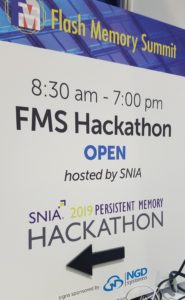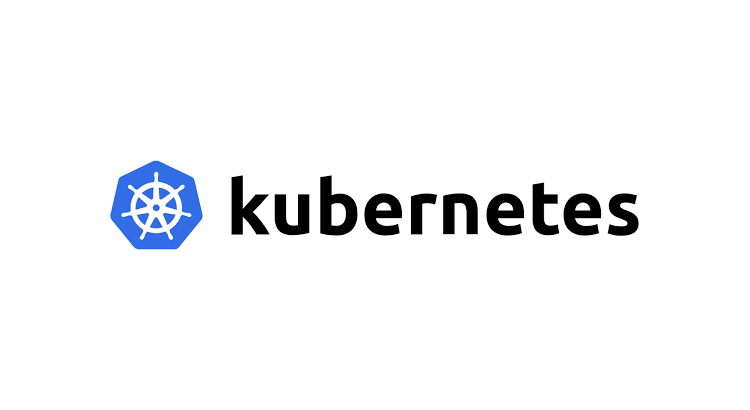 Our recent SNIA Cloud Storage Technologies Initiative (CSTI) Kubernetes in the Cloud series generated a lot of interest, but also more than a few questions. The interest is a great indicator of Kubernetes rising profile in the world of computing.
Following the third episode in the series, we’ve chosen a few questions that might help to better explain (or bring additional context to) our presentation. This post is our answer to your very important questions.
If you’re new to this webcast series about running Kubernetes in the cloud, you can catch the three parts here:
Our recent SNIA Cloud Storage Technologies Initiative (CSTI) Kubernetes in the Cloud series generated a lot of interest, but also more than a few questions. The interest is a great indicator of Kubernetes rising profile in the world of computing.
Following the third episode in the series, we’ve chosen a few questions that might help to better explain (or bring additional context to) our presentation. This post is our answer to your very important questions.
If you’re new to this webcast series about running Kubernetes in the cloud, you can catch the three parts here:
- Kubernetes in the Cloud (Part 1)
- Kubernetes in the Cloud (Part 2)
- Kubernetes in the Cloud (Part 3) – (Almost) Everything You Need to Know about Stateful Workloads
Solutions like operators are tackling some of this complexity, and some changes to storage components indicates progress is occurring elsewhere. A good example is in the 1.14 release (March 2019), where local persistent volumes graduated to general availability (GA). That’s a nice resolution to this blog from 2016, which said,
“Currently, we recommend using StatefulSets with remote storage. Therefore, you must be ready to tolerate the performance implications of network attached storage. Even with storage optimized instances, you won’t likely realize the same performance as locally attached, solid state storage media.”
Local persistent volumes fix some of the performance concerns around running stateful workloads on Kubernetes. Has Kubernetes made progress? Undeniably. Are stateful workloads still difficult? Absolutely. Transitioning databases and complex, or stateful work to Kubernetes still requires a steep learning curve. Running a database through your current setup requires no additional knowledge. Your current database works, and you and your team already know everything you need to keep that going. Running stateful applications on Kubernetes requires you attain knowledge of init containers, persistent volumes (PVs), persistent volume claims (PVCs), storage classes, service accounts, services, pods, config maps, and more. This large learning requirement has remained one of the biggest challenges. That means Kelsey and Uber’s cautionary notes remain relevant. It’s a big undertaking to run stateful workloads on Kubernetes. It can be very rewarding, but it also comes with a large cost. Q. If Kubernetes introduces so much complexity, why should we use it? A. One of the main points of part three of our Kubernetes in the Cloud series, is that you can pick and choose. Kubernetes is flexible, and if you find running projects outside of it easier, you still have that option. Kubernetes is designed so that it’s easy to mix and match with other solutions. Aside from the steep learning curve, it can seem like there are a number of other major challenges that come with Kubernetes. These challenges are often due to other design choices, like a move towards microservices, infrastructure as code, or etc. These other philosophies are shifts in perspective, that change how we and our teams have to think about infrastructure. As an example, James Lewis and Martin Fowler note how a shift towards microservices will complicate storage:“As well as decentralizing decisions about conceptual models, microservices also decentralize data storage decisions. While monolithic applications prefer a single logical database for persistent data, enterprises often prefer a single database across a range of applications – many of these decisions driven through vendor’s commercial models around licensing. Microservices prefer letting each service manage its own database, either different instances of the same database technology, or entirely different database systems – an approach called Polyglot Persistence.”
Failing to move from a single enormous database to a unique datastore per service can lead to a distributed monolith. That is, an architecture which looks superficially like microservices, but furtively still contains many of the problems of a monolithic architecture. Kubernetes and containers align well with newer cloud native philosophies like microservices. It’s no surprise then, that a project to move towards microservices will often involve Kubernetes. A lot of the apparent complexity of Kubernetes actually happens to be due to these accompanying philosophies. They’re often paired with Kubernetes, and anytime we stumble over a rough area, it can be easy to just blame Kubernetes for the issue. Kubernetes and these newer philosophies are popular for a number of reasons. They’ve been proven to work at mega-scales, at companies like Google and Netflix (eg Borg and the microservice re-architecting on AWS). When done right, development teams also seem more productive. If you are working at a larger scale and struggling, this probably sounds great. On the other hand, if you have yet to feel the pain of scaling, all of this Kubernetes and microservices stuff might seem a bit silly. There are a number of good reasons to avoid Kubernetes. There are also a number of great reasons to embrace it. We should be mindful that the value of Kubernetes and the associated philosophies is very dependent on where your business is on “feeling the pain of scaling.” Q. Where can I learn more about Kubernetes? A. Glad you asked! We provided more than 25 links to useful and informative resources during our live webcast. You can access all of them here. Conclusion Thanks for sending in your questions. In addition to the each of the webcasts being available on the SNIAVideo YouTube channel, you can also download PDFs of the presentations and check out the previous Q&A blogs from this series to learn more.








 This series of webcasts, hosted by the
This series of webcasts, hosted by the 

 SNIA volunteers were again recognized for their hard work developing standards for datacenters and storage professionals with a “Most Innovative Flash Memory Technology” FMS Best of Show award. This year, it was SNIA’s Object Drive Technical Work Group who received kudos for the SNIA Technical Position Key Value Storage API Specification. Jay Kramer, head of the FMS awards program, presented the award to Bill Martin, Chair of the Object Drive TWG, commenting “Key value store technology can enable NVM storage devices to map and store data more efficiently and with enhanced performance, which is of paramount significance to facilitate computational storage. Flash Memory Summit is proud to recognize the SNIA Object Drive Technical Work Group (TWG) for creating the SNIA Technical Position Key Value Storage API Specification Version 1.0 defining an application programming interface (API) for key value storage devices and making this available to the public for
SNIA volunteers were again recognized for their hard work developing standards for datacenters and storage professionals with a “Most Innovative Flash Memory Technology” FMS Best of Show award. This year, it was SNIA’s Object Drive Technical Work Group who received kudos for the SNIA Technical Position Key Value Storage API Specification. Jay Kramer, head of the FMS awards program, presented the award to Bill Martin, Chair of the Object Drive TWG, commenting “Key value store technology can enable NVM storage devices to map and store data more efficiently and with enhanced performance, which is of paramount significance to facilitate computational storage. Flash Memory Summit is proud to recognize the SNIA Object Drive Technical Work Group (TWG) for creating the SNIA Technical Position Key Value Storage API Specification Version 1.0 defining an application programming interface (API) for key value storage devices and making this available to the public for  A new session on programming to persistent memory featured a tutorial (video available soon) and a 2 ½ day
A new session on programming to persistent memory featured a tutorial (video available soon) and a 2 ½ day 
 Our recent SNIA CSTI webcast, “
Our recent SNIA CSTI webcast, “
Leave a Reply